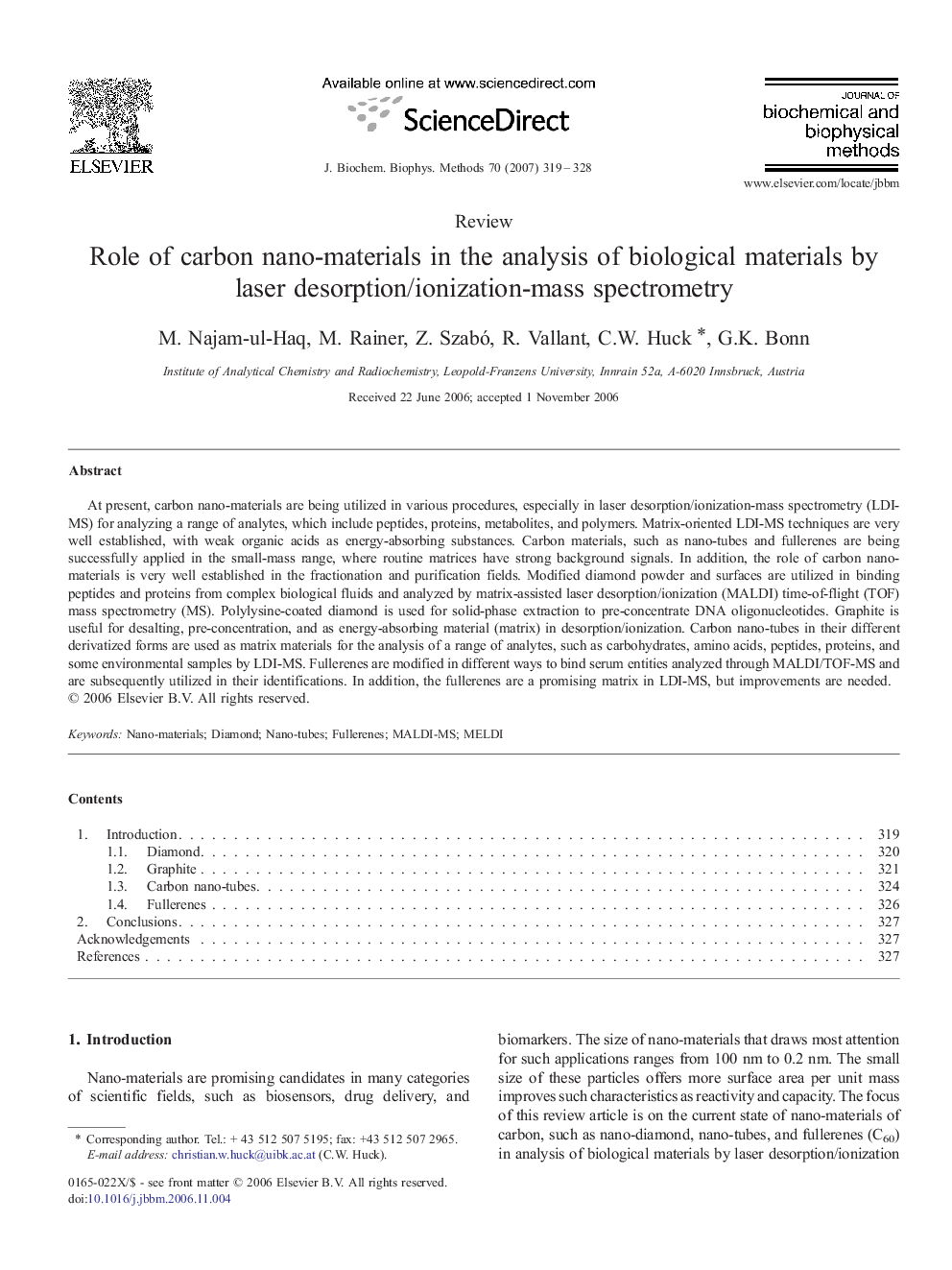| Article ID | Journal | Published Year | Pages | File Type |
|---|---|---|---|---|
| 1988580 | Journal of Biochemical and Biophysical Methods | 2007 | 10 Pages |
At present, carbon nano-materials are being utilized in various procedures, especially in laser desorption/ionization-mass spectrometry (LDI-MS) for analyzing a range of analytes, which include peptides, proteins, metabolites, and polymers. Matrix-oriented LDI-MS techniques are very well established, with weak organic acids as energy-absorbing substances. Carbon materials, such as nano-tubes and fullerenes are being successfully applied in the small-mass range, where routine matrices have strong background signals. In addition, the role of carbon nano-materials is very well established in the fractionation and purification fields. Modified diamond powder and surfaces are utilized in binding peptides and proteins from complex biological fluids and analyzed by matrix-assisted laser desorption/ionization (MALDI) time-of-flight (TOF) mass spectrometry (MS). Polylysine-coated diamond is used for solid-phase extraction to pre-concentrate DNA oligonucleotides. Graphite is useful for desalting, pre-concentration, and as energy-absorbing material (matrix) in desorption/ionization. Carbon nano-tubes in their different derivatized forms are used as matrix materials for the analysis of a range of analytes, such as carbohydrates, amino acids, peptides, proteins, and some environmental samples by LDI-MS. Fullerenes are modified in different ways to bind serum entities analyzed through MALDI/TOF-MS and are subsequently utilized in their identifications. In addition, the fullerenes are a promising matrix in LDI-MS, but improvements are needed.
